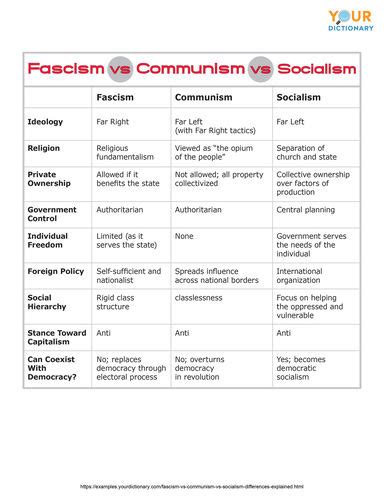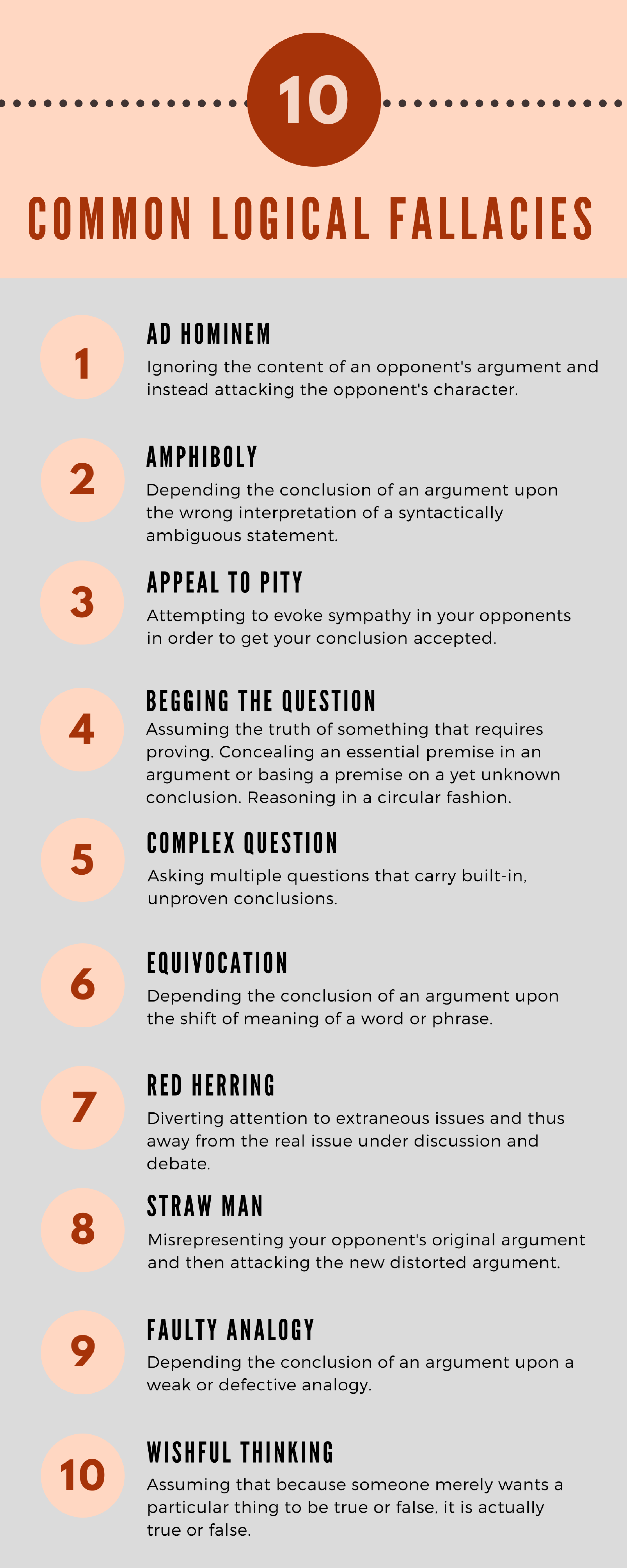Ideologies Compared: Fascism vs. Communism

The ideologies of fascism and communism have been the subject of much debate and comparison, often due to their contrasting political and social philosophies. Both ideologies emerged in the early 20th century and significantly influenced global politics, shaping nations and their trajectories. This article delves into the core tenets, historical contexts, and contrasting characteristics of fascism and communism, offering a comprehensive understanding of these ideologies and their implications.
Fascism: The Rise of Authoritarianism

Fascism is a political ideology that rose to prominence in the interwar period, particularly in Europe. It advocates for a centralized, authoritarian government led by a charismatic leader, often with a strong nationalist and militaristic bent. The term “fascism” itself is derived from the Italian word “fascio,” which refers to a bundle of rods, symbolizing unity and strength.
Key Principles of Fascism
- Nationalism and Patriotism: Fascism places great emphasis on the nation and its perceived glory, often promoting an aggressive form of nationalism. It seeks to unify the people under a common identity, celebrating national traditions and heritage.
- Authoritarian Leadership: Fascism favors a strong, centralized leadership structure, where the leader is often seen as a symbol of national strength and unity. This leader’s authority is absolute, and dissent is typically not tolerated.
- Anti-Individualism: Fascism views individualism as a threat to the collective, emphasizing the importance of the state and the nation over personal interests. Individual rights are often subordinated to the needs of the collective.
- Social Darwinism: Fascism often adopts a survival-of-the-fittest mentality, advocating for a hierarchical society where the “strong” dominate and the “weak” are subjugated. This perspective can lead to social discrimination and the suppression of certain groups.
- Totalitarian Control: Fascism aims for complete control over all aspects of society, including the economy, culture, and personal lives. It seeks to regulate and dictate social norms, often through propaganda and strict social controls.
| Fascism in Action | Examples |
|---|---|
| Nazi Germany under Adolf Hitler | Implementation of strict racial policies, suppression of personal freedoms, and aggressive expansionism. |
| Fascist Italy under Benito Mussolini | Establishment of a corporate state, promotion of Italian nationalism, and aggressive foreign policy. |

Communism: A Vision of Equality

Communism, in contrast to fascism, is a political and economic ideology that aims to establish a classless society where wealth and resources are distributed equally among the people. It is often associated with the works of Karl Marx and Friedrich Engels, who envisioned a utopian society free from exploitation and inequality.
The Communist Manifesto and its Principles
The Communist Manifesto, published in 1848, outlined the core principles of communism. These principles include:
- Abolition of Private Property: Communism advocates for the elimination of private ownership of the means of production, believing that this is a key factor in social inequality.
- Proletarian Revolution: Marx and Engels predicted a revolution led by the working class, or the proletariat, to overthrow the capitalist system and establish a socialist state.
- Dictatorship of the Proletariat: Following the revolution, communism proposes a transitional phase where the working class holds political power. This is meant to be a temporary phase until a classless society is fully realized.
- From Each According to Ability, to Each According to Need: This famous quote from Marx encapsulates the idea that individuals contribute to society based on their abilities, and receive from society according to their needs.
Historical Communist Regimes
Communism has been implemented in various countries, each with its own unique interpretation and approach. Some notable examples include:
- Soviet Union: The USSR, led by Vladimir Lenin and later by Joseph Stalin, became a powerful communist state. However, its history is marked by political repression, forced collectivization, and the infamous gulag system.
- People’s Republic of China: Under Mao Zedong, China embraced communism, leading to the Great Leap Forward and the Cultural Revolution, both of which resulted in immense human suffering and economic setbacks.
- Cuba: Fidel Castro’s revolution brought communism to Cuba, leading to a unique blend of socialism and market reforms.
Contrasting Fascism and Communism
While both fascism and communism are often categorized as extreme political ideologies, they differ significantly in their core beliefs and approaches to governance.
Leadership and Power Dynamics
- Fascism: Fascism centralizes power in the hands of a single leader, who is often revered as a symbol of national strength. This leader’s authority is absolute, and dissent is typically suppressed.
- Communism: In theory, communism aims for a collective leadership, with power resting in the hands of the working class. However, in practice, communist regimes have often devolved into authoritarian rule, with leaders like Lenin, Stalin, and Mao holding near-absolute power.
Economic Systems
- Fascism: Fascism often adopts a mixed economic system, combining elements of capitalism and socialism. It supports state intervention in the economy, particularly to promote national interests and industrial growth. Private enterprises are tolerated, but under strict state control.
- Communism: Communism aims for a fully socialist economy, where the means of production are owned and controlled by the state. Private property and capitalism are seen as exploitative and detrimental to social equality.
Social Hierarchy and Inequality
- Fascism: Fascism accepts and often promotes social hierarchies, with the “strong” dominating the “weak.” This can lead to discrimination based on race, ethnicity, or social status.
- Communism: Communism seeks to eliminate social hierarchies and inequality by abolishing private property and the capitalist system. It aims for a classless society where all individuals are treated equally.
Individual Liberties and Freedom
- Fascism: Fascism suppresses individual freedoms and liberties, often in the name of national unity and stability. Dissent and opposition are not tolerated, and personal expression is restricted.
- Communism: While communism theoretically values collective freedom and equality, its implementation has often resulted in the suppression of individual rights. Freedom of speech, religion, and movement have been restricted in many communist states.
International Relations
- Fascism: Fascism often promotes aggressive nationalism and expansionism, viewing other nations as threats or obstacles to national greatness. This can lead to imperialistic policies and international conflicts.
- Communism: Communism, particularly in its Marxist-Leninist form, advocates for international solidarity and the spread of the communist revolution. However, this has often resulted in tensions and conflicts between communist and non-communist nations.
Conclusion: The Legacy and Impact
Fascism and communism, despite their contrasting principles, have both left indelible marks on the political and social landscape. Their rise and fall offer important lessons about the dangers of extreme ideologies and the importance of balancing power, freedom, and equality in a just society.
While both ideologies have been responsible for immense human suffering and societal upheaval, they have also sparked important conversations about social justice, economic equality, and the role of the state. The study of these ideologies remains crucial for understanding the complexities of human nature, governance, and the potential pitfalls of ideological extremes.
What is the main difference between fascism and communism in terms of their approach to society and governance?
+Fascism emphasizes nationalism, authoritarian leadership, and the dominance of the state over individual freedoms. It often promotes social hierarchies and can lead to aggressive foreign policies. Communism, on the other hand, aims for a classless society where wealth and power are distributed equally. It theoretically values collective freedom and equality, though its implementation has often resulted in authoritarian rule.
How have the legacies of fascism and communism shaped modern political ideologies and discourse?
+The legacies of fascism and communism have left an enduring impact on political thought. Modern political ideologies often draw from or react against these extreme systems. The principles of individual freedom, equality, and democratic governance have been strengthened in response to the authoritarian and repressive aspects of fascism and communism.
What are some of the common criticisms of fascism and communism, and how have these ideologies evolved to address them?
+Fascism is often criticized for its authoritarian nature, suppression of individual rights, and aggressive nationalism. Some fascist regimes have attempted to address these criticisms by adopting more moderate policies or emphasizing national unity and stability. Communism, on the other hand, is criticized for its economic inefficiencies, authoritarian rule, and the suppression of individual freedoms. Some communist states have implemented market reforms and promoted limited individual freedoms, while others have maintained strict control over society.



